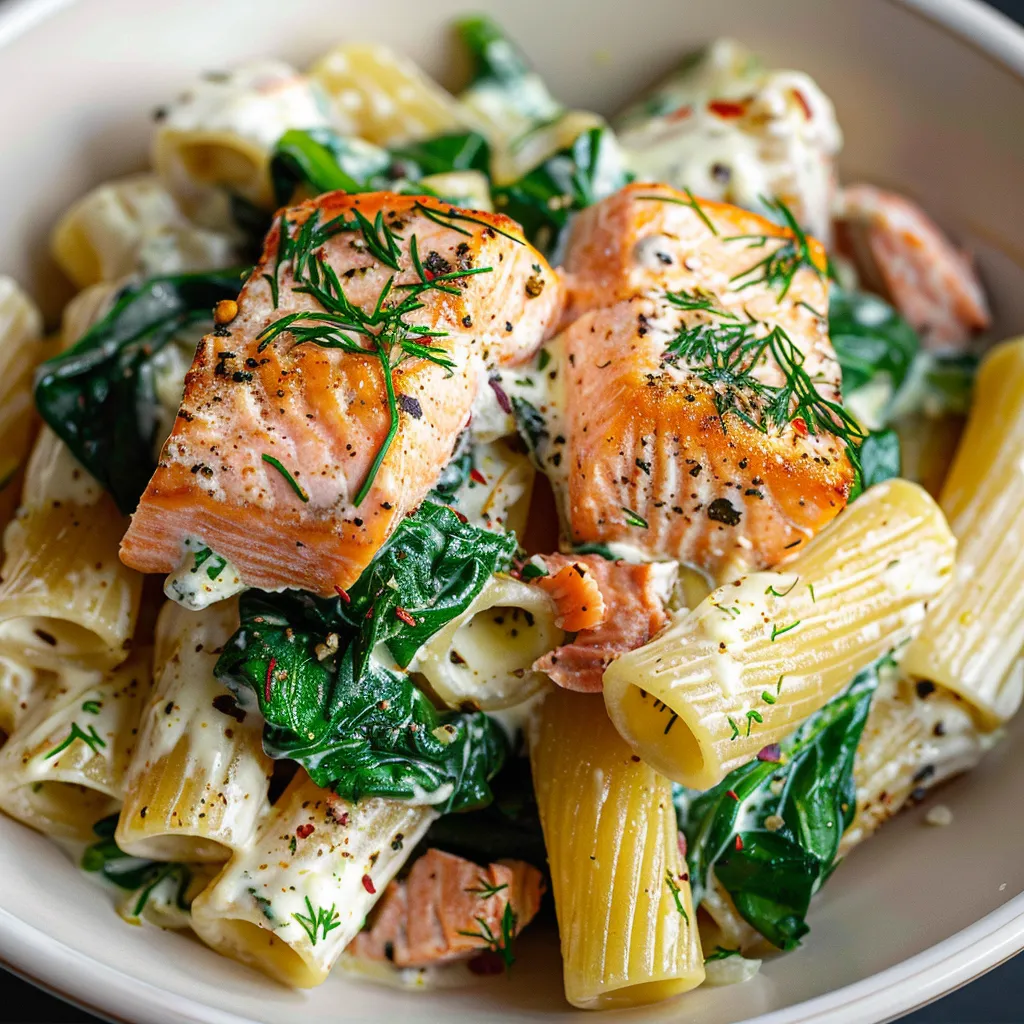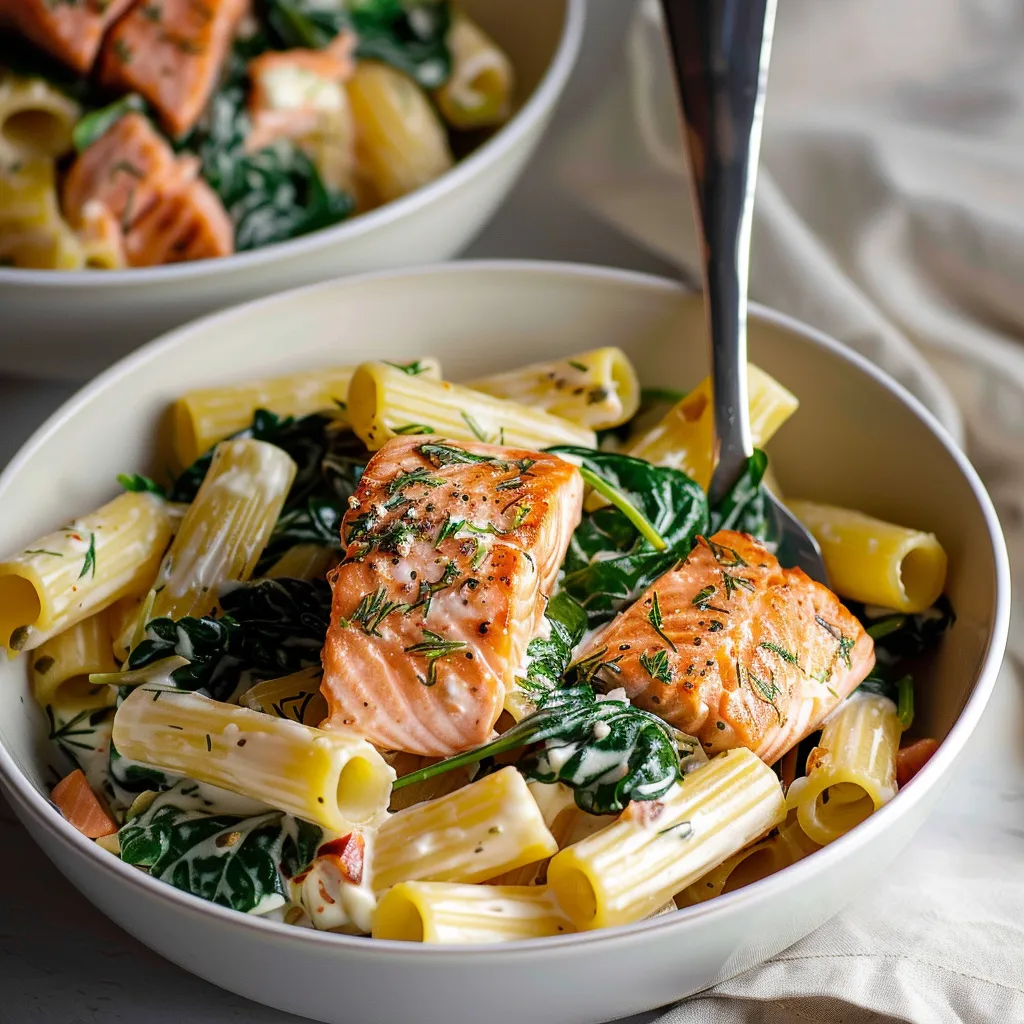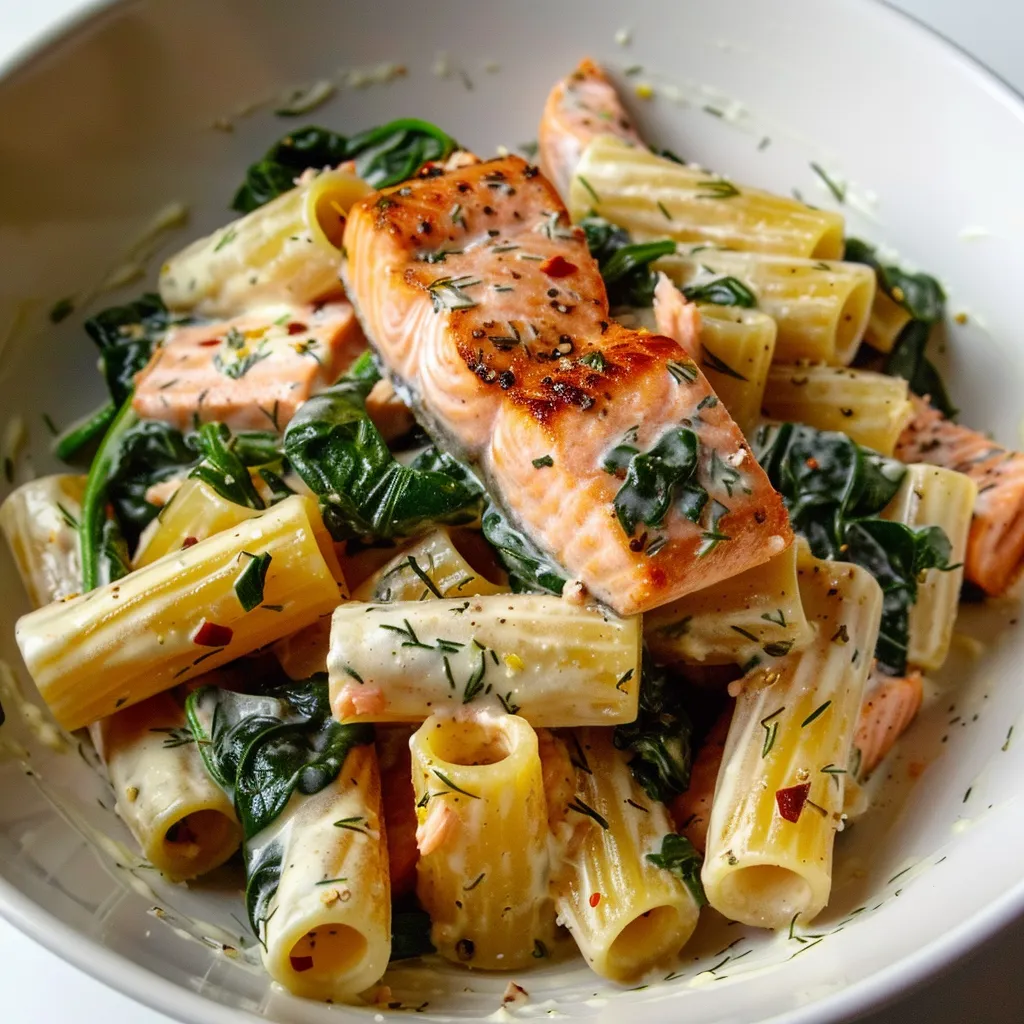 Pin it
Pin it
This Creamy Salmon Spinach Pasta combines perfectly cooked salmon, tender spinach, and al dente pasta in a velvety Greek yogurt sauce. The natural richness of the salmon pairs beautifully with the bright lemon notes and fresh dill, while the Greek yogurt creates a luxuriously creamy sauce without the heaviness of traditional cream-based pastas.
My family discovered this combination when trying to make pasta night healthier. The Greek yogurt sauce was such a hit that even my cream sauce-loving husband now requests this version specifically.
Essential Ingredients
- Salmon: Look for fresh, firm fillets with a bright color and no strong fishy smell. Wild-caught offers the best flavor, but good quality farmed works well too.
- Pasta: Choose shapes that can hold the creamy sauce. Rigatoni or penne are perfect, their ridges catching every bit of sauce.
- Fresh Spinach: Adds color, nutrition, and a subtle earthy flavor. Fresh works better than frozen here.
- Greek Yogurt: Full-fat provides the creamiest sauce, but low-fat works well too. Make sure it's plain, not flavored.
- Fresh Lemon: Brightens all the flavors and complements both the salmon and spinach perfectly.
 Pin it
Pin it
Step-by-Step Instructions
- Prepare Your Pasta:
- Bring a large pot of water to a rolling boil. Season generously with salt - the water should taste like the sea. Cook pasta until just al dente, about 1 minute less than package directions. Reserve 1 cup of pasta water before draining - this is crucial for the sauce.
- Cook the Salmon:
- Pat salmon dry with paper towels for better seasoning adherence. Season both sides with salt and pepper. Heat olive oil in a large skillet over medium-high heat. Place salmon skin-side up and cook for 4 minutes. Flip and cook another 3-4 minutes until just opaque.
- Create the Sauce:
- Return pasta to the pot over low heat. Add Greek yogurt and stir continuously. Gradually add pasta water until you reach desired consistency. Fold in fresh spinach until just wilted. Add lemon juice and dill, stirring gently.
- Bring It All Together:
- Break salmon into large, flaky pieces. Gently fold into the pasta mixture. Taste and adjust seasonings. Serve immediately while hot.
Over years of making this dish, I've learned that timing is everything. I start the salmon when the pasta is halfway done, ensuring everything comes together at the perfect temperature.
Temperature Matters
The key to a smooth, creamy sauce is temperature control. Adding the Greek yogurt to hot pasta can make it separate, so I always let the pasta cool for a minute before stirring it in. The residual heat gently warms the sauce without breaking it.
Make-Ahead Tips
While this dish is best served fresh, you can prep components ahead of time. Cook the salmon and store it separately from the pasta. When ready to serve, gently reheat the pasta with a splash of water before adding the salmon.
Chef's Helpful Tips
- Pat your salmon dry before seasoning - this ensures a better sear.
- Don't skip the pasta water - it's essential for sauce consistency.
- If your sauce seems too thick, add pasta water a tablespoon at a time.
After perfecting this recipe through countless variations, I've found it's the perfect balance of healthy and satisfying. Whether you're cooking for a family dinner or meal prepping for the week, this pasta dish delivers restaurant-quality results with minimal effort. The combination of protein-rich salmon, nutrient-packed spinach, and satisfying pasta makes it a complete meal that's both nourishing and delicious.
 Pin it
Pin it
Frequently Asked Questions
- → Can I use frozen salmon?
- Yes, thawed frozen salmon works just as well as fresh. Canned salmon is also an option.
- → Why save pasta water?
- The starchy pasta water helps thin the sauce to the perfect consistency if needed.
- → How do I know when salmon is done?
- Salmon should be opaque and flake easily with a fork, reaching 145°F internal temperature.
- → Can I make this ahead?
- Best served fresh, but you can cook extra salmon for use in other meals throughout the week.
- → Why use Greek yogurt instead of cream?
- Greek yogurt provides creaminess with less fat and adds protein, making the dish healthier.
